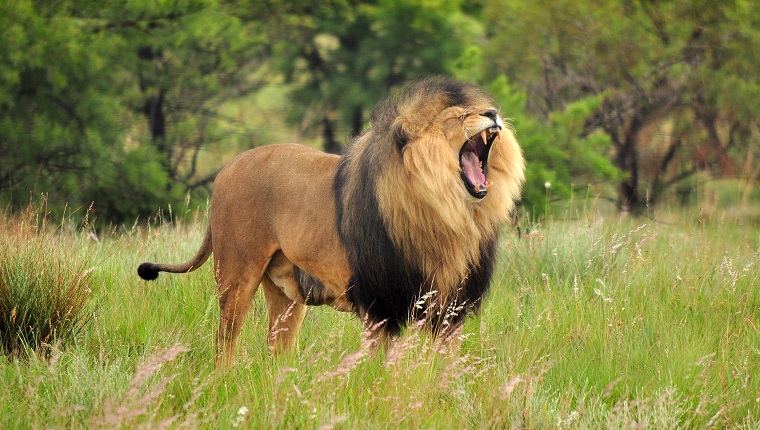Have you ever wondered why domestic cats purr but are never seen roaring? Meanwhile, big felines like lions can let out huge roars but never make a simple, happy purr sound.
Scientists have a few ideas on why there’s such a divide between the two, and the theories are based on a small bone found near the vocal cords.
In fact, because of this difference, cats who purr can never roar, no matter how hard they try.
Roar Versus Purr
The cat family, known as Felidae, is split between bigger cats who can roar and smaller cats who purr.
The roaring cats are part of the sub-family called Pantherinae, and the purring cats are in the sub-family Felinae. In fact, only four species of cats can actually roar. These are lions, tigers, leopards, and jaguars.
The most widely accepted explanation for the mechanism of a roar versus a purr comes down to a bone called the hyoid, situated near the larynx.
How A Roar Works
In roaring cats, the hyoid bone is not completely ossified, or hardened. The flexible bone, coupled with a specialized ligament, helps these large cats make a deep, roaring sound. The ligament stretches, allowing the roar’s pitch to go deeper as the ligament extends further.
Another big difference is found in the way the vocal cords fold. In roaring cats, these vocal cords are flat and square-shaped, rather than the typical triangle shape.
This shape aids larger cats in using less lung pressure to make a louder sound. In fact, the lion’s roar can get as loud as 114 decibels, which is close to a human’s pain threshold.
The Mechanism Of The Purr
Domestic cats, meanwhile, make a purring sound that humans find very comforting.
The purr sound is made from a combination of a completely ossified hyoid and special vocal folds that allow air vibrations while both exhaling and inhaling.
Unlike lions, who roar at 114 decibels, cats purr on average around 25 decibels.
Interestingly, some larger cats like bobcats and cheetahs also purr.
Despite their larger size, their anatomy is more closely matched to a smaller cat with a hardened hyoid that allows for purring.
An Exception To The Rule
There’s one exception to the rule that a flexible hyoid leads to a roaring cat. The snow leopard has a flexible hyoid, but it can neither truly purr nor truly roar.
They make a semi-roaring sound that’s softer and sometimes referred to as chuffing. This exception is the reason that scientists aren’t positive that the hyoid bone is the main reason for purring versus roaring.
Large cats like lions may roar to help mark out their territory or scare away competing predators. Domestic cats, meanwhile, may purr to show contentment or even to calm themselves.
Although roaring would seem to have a bigger advantage to purring in general because it’s louder and scarier, some researchers have found that purring falls within a frequency that promotes tissue regeneration and bone healing.
So if you think your kitty’s purring is helping your health, it might actually be doing just that!
Does your cat soothe you with their soft, loving purrs? Do you think they would roar if they could? Let us know in the comments below!




